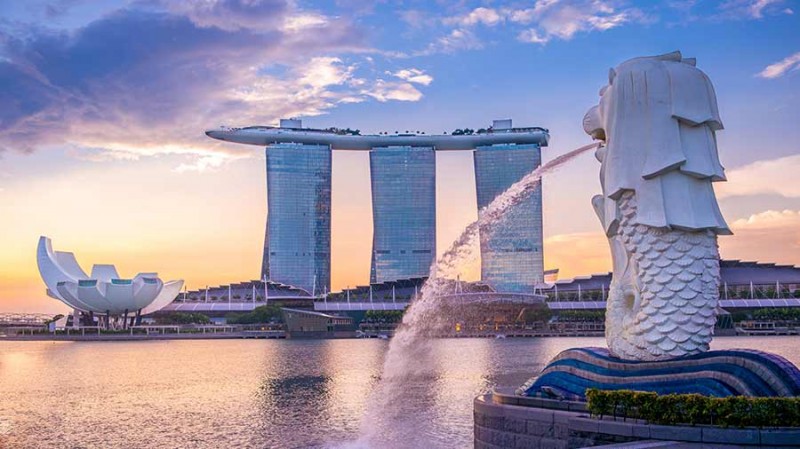
(June 29): Malaysia’s economy is cranking up after the pandemic. Land borders with Singapore have reopened, bringing in millions of visitors. Kuala Lumpur’s notorious traffic jams are back and shoppers are flocking to malls. The revival also has a rich irony: So many workers have left for better-paid jobs in the country’s wealthy southern neighbour that businesses are struggling to meet demand.
From tourism to agriculture, an absence of staff is constraining the recovery. It’s also adding to deeper strains in an upper middle-income economy that was once a model for the developing world but has since suffered from a long-term slowdown in growth — one that started well before Covid-19. To graduate to the next tier of prosperous economies, Malaysia must staunch the flow of talented citizens abroad.
The nation’s ambition is to escape a middle income trap, where it is less affluent than Singapore, but doing better than neighbours like Indonesia and the Philippines. It’s one thing to bring in labour for agriculture, construction and low-to-mid-tier manufacturing. But Malaysia faces a double whammy: The low-skilled workforce is depleted because of a hiring freeze and border closures during Covid-19, but high-skilled people are likely to resume their exodus.
Malaysia is slowly starting to ease its restraints on hiring. To offset the crunch in the meantime, employers have been engaging locals in work they often shunned: “3D jobs” that are dirty, dangerous and difficult. In the Cameron Highlands, where trucks wait to drive to Singapore with tomatoes, peppers, onions and cucumbers, farmer Louis Lau is using Malaysians for labour once sought by foreigners. “We are facing a big problem,” he told me. Other sectors don’t have the same flexibility. In Penang on the northwest coast, scores of ships that would normally be put to sea for at least a week sit dockside, thanks to a dearth of migrant workers.
At the other end of the country, hoteliers in Johor bemoan the gravitational pull of Singapore. The Star newspaper highlighted the saga on its front page recently, with complaints from executives about the scarcity of foreign labour needed to clean rooms, handle check-ins and keep the lights on. “It is challenging for hotels here to compete with employers in Singapore, as locals can be paid three times higher for doing similar jobs,” Suhairi Hashim, director of Tourism Johor, told The Star.
After lobbying hard for the bridge links with Singapore to reopen, Johor businesses now find they barely have enough people to unbolt the latch. While Malaysian employers claim the city-state — where GDP per person is among the highest in the world — is sucking in talent, Singapore is suffering a shortfall of its own that sent the unemployment rate to 2.2%.
The Singapore government, which also imposed tough border controls during Covid, is trying to ease the backlog. Ministers are urging businesses to hire locals. Dependence on imported labour has become a touchy subject over the past decade, especially after a deep recession in 2020 led to a rare electoral setback for the ruling party. While the foreign workforce has receded over the past two years, it represents more than 20% of the population.
Malaysia and Singapore, joined for two tumultuous years in the 1960s, will always be linked economically. Both, in their own way, are increasingly ambivalent about foreign workers. That does little to diminish their need. An aging Malaysia risks stagnating before growing rich. It needs a vibrant employment scene to avoid that fate. Singapore, for all its prowess as a global business center, still needs contractors, bus drivers, construction workers and nurses.
Of the two nations, Malaysia’s challenges appear greater. It faces a brain — and brawn — drain, driven by hard-to-extinguish racial preferences that favour ethnic Malays at the expense of minorities. “A significant share of the country’s most educated and skilled citizens leave the country for lack of opportunities,” according to a World Bank report last year that scrutinized the country’s progress toward becoming a high-income country, a goal considered likely to be attained between 2024 and 2028. One-third of emigrants were highly skilled, accounting for about 20% of the college-educated domestic population.
Encouraging people to stay will require Malaysia loosen some of the rigidities that have stymied business activity. A plethora of state-backed firms and nominally private companies run by people close to the government have tentacles in almost every sector, which mitigates against competition. State enterprises tend to be used as national piggy banks to finance politically desirable projects and undertakings that contribute little to the economy’s overall dynamism. Suffice it to say, not exactly aspirational for young graduates.
Foreign workers in Malaysia tend to be low-skilled; relatively few have finished high school. They began filling gaps that opened up in the labour market decades ago, especially manufacturing, and comprised about 15% of the workforce prior to the pandemic, according to the Bank. (There’s also a large, but hard to quantify, population of undocumented laborers.)
Malaysia has long aspired to join the ranks of advanced economies and proudly paraded some of the baubles of such status: a domestic auto industry, the world’s tallest building and so on. It would do well to focus on less jazzy but vital components of success, like a labor market that can drive development in coming decades, not a relic of the go-go years of the late twentieth century.
Source: https://www.theedgemarkets.com/article/malaysias-top-talent-fleeing-singapore-daniel-moss

